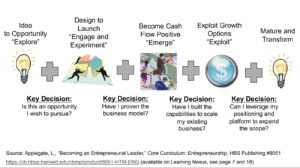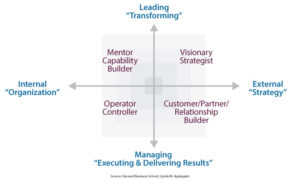
I recently attended a Women Presidents’ Organization continuing education event entitled “Leading High Growth Business.” The workshop was led by Lynda Applegate who is the Baker Foundation Professor, Sarofim-Rock Professor of Business Administration, Emerita, at Harvard.
If you ever get the chance to attend a workshop with Lynda, do it! She doesn’t lead many events outside teaching at Harvard Business School. She’s simultaneously funny, engaging, and thought-provoking. Below are my top takeaways from the workshop.
High-Growth Business Leadership Tips
1. Every company, even a non-profit or publicly-held entity, needs to understand its market valuation. You need to understand the value of your organization and the metrics behind that valuation. Private company owners often think, “My business is worth what someone will pay for it.” While that has an element of truth, it’s also important to grasp the metrics behind valuation calculations.
Having a ballpark idea of what your business is worth can drive executive decisions. For example, if your valuation is negatively affected by being too services-oriented, you can look for more product opportunities.
Here’s a good starter post on private company valuation methods.
2. Have an innovation process in place when launching anything “new.” Whether starting a new business or launching a new product, you should have a defined process. Know where you are on the innovation lifecycle at all times. It will affect both leadership decisions and valuation.
3. Sustained high growth involves controlled (not reckless) risk. It’s necessary to take calculated gambles on clients, on hires, and on new offerings. But make sure you are not taking unnecessary risks or gambling without an option B. There will never be a perfect time to quit your job to start your company or to launch a new product.
Everyone has their own risk profile. Make sure you truly understand yours as a leader.
The first time I started the agency, I caved to take an amazing job offer because I wasn’t ready to take the risk. The second time I saved a nest egg, downsized my lifestyle, delayed having a child, and gave myself two years to succeed or fail.
4. Understand customer value metrics. Not all accounts are created equal. Know acquisition cost and profit margin on every account. Off-board low margin accounts that drain your resources to make room for more profitable accounts. Profile what your best customers have in common and score prospects based on their potential fit and margin.
5. Leader and team members must evolve. I see high-growth companies making this mistake consistently. The gung-ho charge forward employees that are perfect for a startup do not adapt to the changing environment and business needs as the organization grows. This often leads to chaos as larger organizations can’t work effectively with continually changing processes.
“The reason why many entrepreneurs fail to adapt their leadership capabilities to their growing business needs remains fuzzy,” said Lynda Applegate. “It’s assumed that there’s an entrepreneurial personality and an executive personality—and never the twain shall meet. I don’t think that’s true.”
I’m certainly a different leader today versus when I started the agency in 2001. For example, leading a larger, more diverse team means opening up to new ways of communication and team building. I tend to be “all business,” but some team members want to see a more social side to everyone’s life to feel more connected. That’s not something I planned for as part of business, but employee retention is crucial in a high-growth service business.
6. Building high-growth businesses is a team sport. Following up with the takeaway above, WHAT you work on as a leader needs to evolve. And as you build out your leadership team, you need to look for individuals that can fill the gaps in your leadership strengths.
The matrix below shows leadership teams must be equally strong in transforming the business as in managing it. They must concentrate on external strategy while building a strong internal team and processes.
As Lynda stated in the workshop, “Building business is a team sport.”
Conclusion
Leading a high-growth company can be an exciting ride. But avoid certain potholes. Some will blindside you, but many can be anticipated and corrected with careful planning and analysis of your business. Most successful leaders, the ones who evolve from startup CEO to mid-market CEO, change and never stop learning.




